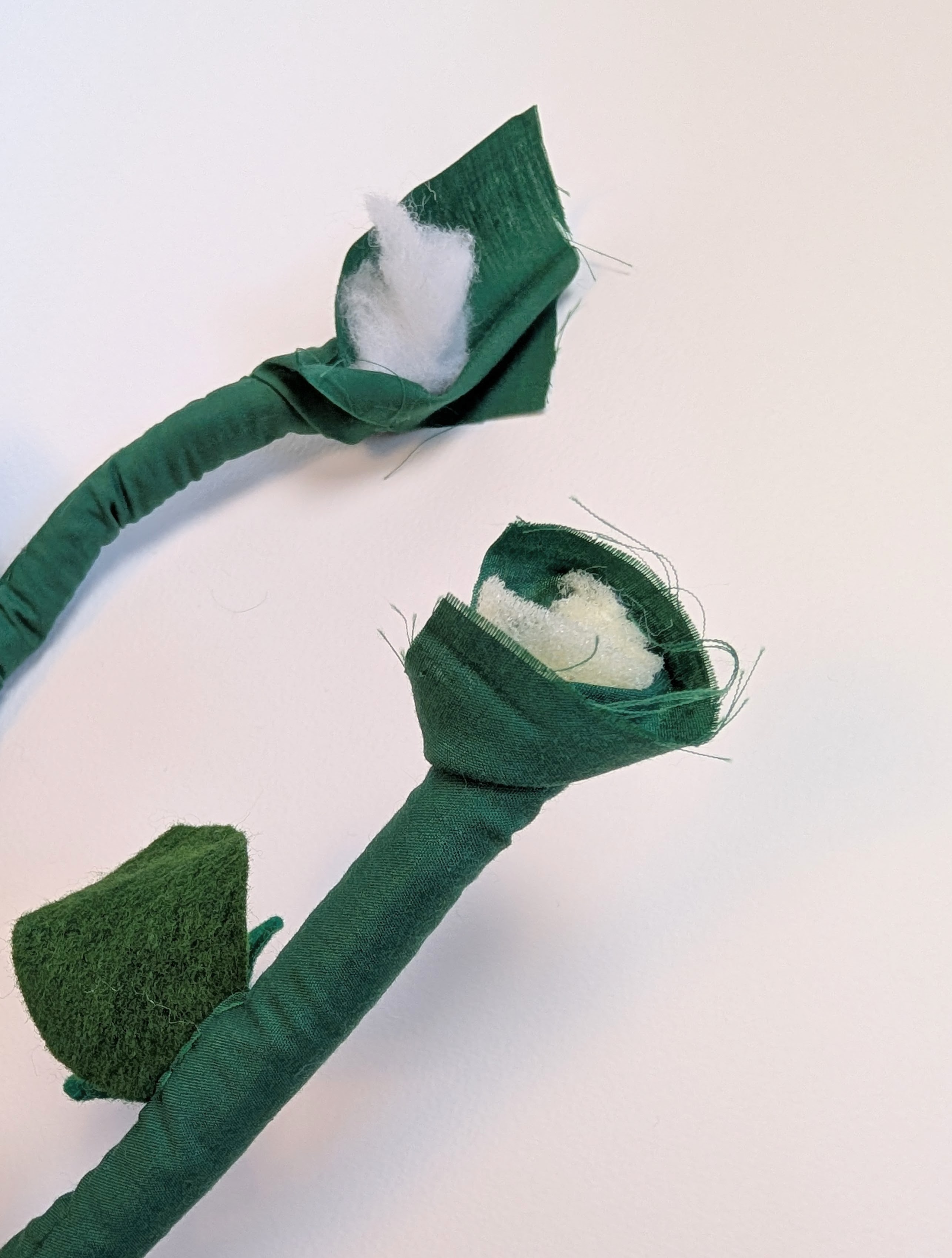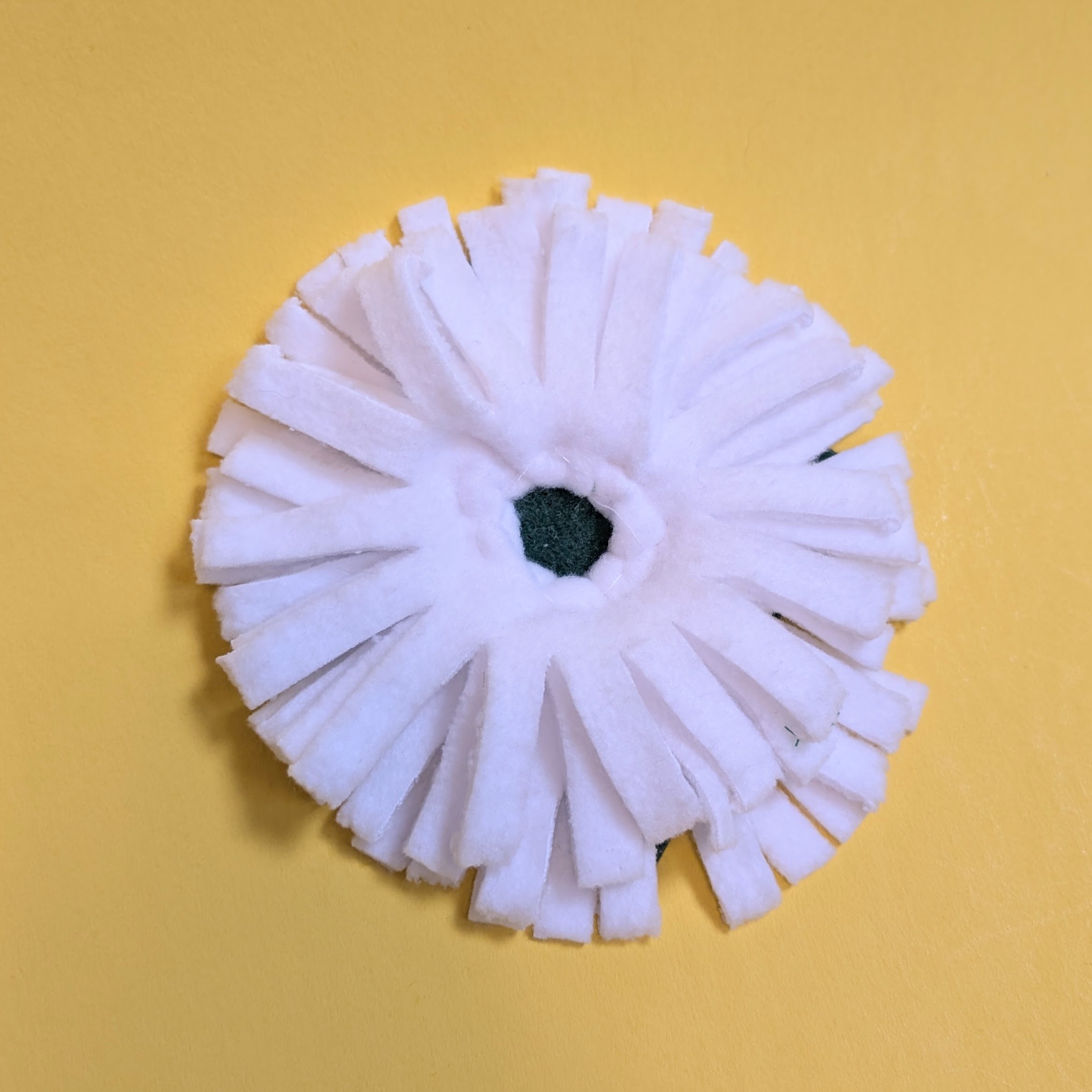Earlier this summer, I taught my second Menagerie workshop at the Minneapolis Textile Center.
We had a full class and it was loads of fun. I'd done most of the conceptualizing while preparing for that inaugural workshop in November, along with ironing out kinks in the flow of activity, all of which are par for the course when conducting any lesson thing for the first time. There were twice as many participants this time around, but even though my actual prep work was doubled, it still felt more relaxed, with far fewer unknowns, so it was an overall wonderful experience.
I also found myself with some time before the participants arrived to take pictures!
Here are the workstations.
The outcome of the workshop was to make a sampler animal, in the process practicing (or learning for the first time) various techniques for adding surface details with applique and quilting-stitching, and making and attaching different appendages within seams.
It doesn't look like anything you'll have seen in nature thus far, but that's not to say an animal this multicolored might not exist in some far-flung corner of the world we've never had a chance yet to visit, right? My reasoning behind the colors (14!) was purely visibility and clarity - differently-colored parts showed up less ambiguously in photos, and were easier to visualize spatially in the various reference animals set around the room.
Everything that needed to be cut out, from templates to fabric pieces, was done so ahead of time, to allow the participants to focus on simply sewing during our time together. This translated to a lot of physical labor on my part in the weeks leading up to the workshop day, but it was worth it to be able to use our workshop hours truly efficiently.
There were lots of other notions spread out among the participants, including the long funnels for directing pellets down into small spaces. I designed this a long time ago for doll legs and called it The Contraption - the ones in the photo are sturdier, less improvisational versions of that prototype, and the participants each got to take one home.
This was my table up front. I love the giant monitor that projected a view of my workspace! That said, even with this nifty bit of technology, I spent very little time actually up front teaching and instead wandered around the room doing personalized demos because everyone was mostly progressing at their own pace and needed help at very different times. There were aspects of this experience that reminded me of labwork when I was a school teacher - very much more a facilitative kind of instruction than lecture-and-keep-up.
Emily came to help me set up in the beginning, so if the room displays look put-together and intentional, it was to her credit. And it was also for this reason that I had that extra bit of time to take these photos before the class began.
We brought a large number of my prototypes from home - some are the familiar faces of the first Menagerie pattern,
and others are newcomers who will be in the sequel.
We also brought the Spring Birds collection - the birds, the kits and the pattern-in-print.
Sharing the table were the classroom kits of the Rabbit, Ladybug, Grey Cat and Calico Cat. After completing their sampler animal in class, the participants got to pick one of these four kits to assemble on their own during the remaining time.
Speaking of, they were kind enough to allow me to take and share photos, so here are some shots of the class hard at work.
In this shot, someone's sampler animal was really close to being finished!
When I've made the sampler animal myself at home and timed the process, it usually takes me about an hour and a half; perhaps two if I am also pausing to photodocument each step. However, most of the participants ended up using the entire workshop time to work on just their sampler animal, and took their choice kits home to work on. In class, there are so many factors that stretch that time out to the full four hours - or longer. Obviously, the learning process is a huge one - it takes time to read and digest instructions, for example. Temperamental sewing machines were another. Almost every participant had an issue with their machine handling fleece, although I'm happy to report that most were resolved by giving them a fleece needle. My old Pfaff has been able to sew through multiple layers of fleece with standard needles for years without issue, so it took me a while to figure out that an ineffectual needle might possibly be the problem for the frustration being experienced in class that day. Sometimes the simplest solution is the truly the best one!
I thought I'd mention this here in case some of you have had the same issue with fleece - if so, try a fleece needle, or just any stretch or even knit ball-point needle. You wouldn't imagine that fleece is in the same category of fabric as a T-shirt, but it strangely is. It's only recently that I've begun to notice specific Fleece Needles in stores - they're essentially stretch needles, as I'd mentioned earlier, but labeled for fleece. Maybe enough people have had difficulty with this that Schmetz has finally decided to market these specially.
I would love to run a third Menagerie workshop next summer if there is interest. If you're in the cities and missed the earlier two, look out for announcements here and on Instagram (I'm trying to post more regularly there!) In the meantime, let me tell you about my second workshop that's coming up in October. It's all about sleeves and armholes and how to put them together so they fit well and are comfortable.
You guys know I am obsessed with deconstructing drafting and trying to demystify it for regular folks who haven't done fashion courses or interned on Saville Row or wherever. But to teach a full drafting course just isn't feasible - it takes too long, and I honestly believe a person would need a lot more experience in real-world drafting for a very wide range of bodies to bring what is truly helpful to teach such a class. I have drafted for many years, yes, but mostly for people in my family, and sporadically, at that.
Sleeves, however - one particular, niche aspect of drafting - I thought I might realistically attempt. I've deconstructed the theory to some degree in this now-somewhat-well-referenced post, and I've inferred from the response that the information has filled a gap in the content currently out there. I'd like to take that theory a step further in this workshop with a hands-on portion in which we'd measure a partner and draft a sleeve from those measurements. The plan is not to use the usual drafting textbook rubrics but to freehand the drafts, the way I've always done them, using sleeve theory principles together with customized preferences. It will be rule-breaking and dangerous! Haha! No, not really. My goal is liberation from the rigid Hows by providing some Whys, and if I can reduce someone's frustration in the drafting experience, I will have been successful.
Anyway, if you're in the cities and are interested in drafting more comfortable sleeves, come join us! Half of the time will be a lecture-of sorts, but I will bring lots of props for show-and-tell, like multiples of this crazy vest that I'm fine-tuning.
Because there was no one here to accurately measure me, I had to use as my starting point my most recent sloper, which was still 13 years old and had to be heavily modified to fit current-me. The plan is to graft on differently-drafted sleeves to demo various effects: high sleeve cap, low sleeve cap, large armholes, small armholes, etc. I foresee myself repeatedly zipping and unzipping myself in and out these throughout the afternoon. It will probably be chaos. The participants will probably think I'm insane. So be it. It won't be the first time someone thought that. At the end of our time together, I hope to make them feel comfortable with their own bodies, so they don't so much focus on all the ways they depart from the commercial standard as leave feeling that there's a sleeve cap for each gloriously unique arm that's in my classroom that day.
Register here.
Some quick details:
Date: Thursday, October 16th 2025
Time: 2- 4 pm
Place: Minneapolis Textile Center
I hope to see you there!














































































































